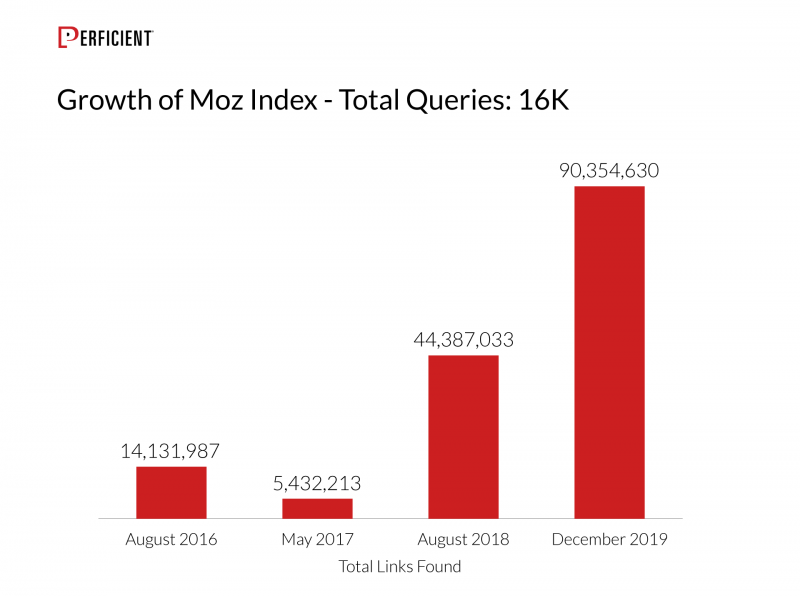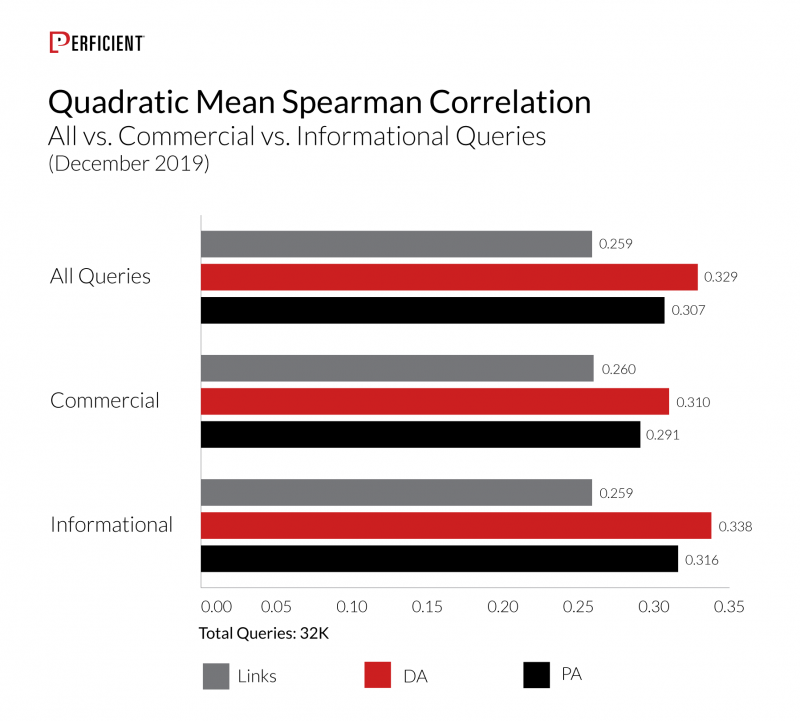It has been known that links are a part of Google’s ranking factors. Is this still true in 2020?
In this episode of the award-winning Here’s Why digital marketing video series, Eric Enge explains the impact of links on ranking and walks through some insights from his latest links study.
Don’t miss a single episode of Here’s Why. Click the subscribe button below to be notified via email each time a new video is published.
Resources
Transcript
Hi, everybody. Eric Enge here. I’m the Principal of the Digital Marketing Solutions business unit at Perficient. Today I’m going to talk about our latest links as a ranking factor study. We’ve actually run that study now for four straight years, examining the impact of links on ranking. More specifically, we’re doing that through correlation analyses where we’re measuring the correlation of links to pages that rank. This is a methodology that is well-known and we’ve been doing it for many, many years. What we did differently this time is we expanded our query set just a little bit to 32,000 queries. We did that so that we could get a better look at some of the categorized impacts of links—by which I mean, does it matter more with medical queries or financial queries or technology queries or things like that. And I need to mention that Moz graciously provided us with access to data from Link Explorer.
Across our 32,000 queries we actually saw over 90 million backlinks in the Moz data which is a ton of total links, obviously. Interestingly enough, by the way, if you look at the chart now, what I’m showing you is that the Moz index continues to grow year over year.

What we saw this year as compared to last year were twice as many links, so that was really interesting to note.
But to get into the real details here, the punchline if you will, the pure quantity of links as a ranking factor—by which I mean, the number of links to the ranking page—declined fairly significantly as a ranking factor. They dropped down to 0.26, the lowest value we’ve seen among the four years of our study so far.

That’s still material, but it is noticeably down and that was pretty interesting to note.
However, Moz domain authority and page authority show a very strong correlation, coming in at 0.33 and 0.31, respectively. This is significantly higher than what we saw for the total number of links to the page. And it could signal that Google is refining how they look at links. My guess is that what’s happening here is they’re getting better at discerning what links should get the most weight and they’re beginning to experiment more and do more with the granularity of how they weight links, which is really interesting.
Before I go on, I have to actually stop for a second and say, Google doesn’t use Moz domain authority or Moz page authority as a ranking factor. That’s a Moz-only metric, it’s meant to effectively be similar to Google’s PageRank and try to assess the authority of a page. But I also want to note that Google, to my understanding, doesn’t really think of links as authority signals. I think they wrap them into their quality algorithm that they take from the quality signals. But regardless, it appears that Google is beginning to discern more the value per link and see gradations in a more refined way than they have in the past. At least that’s my speculation on the data that I’ve just shared with you.
But we also split this out and did more refined analyses and we looked at informational queries versus commercial queries to see if there were differences there. We definitely saw stronger correlation of links to informational pages than there were to commercial pages.

But that makes sense because a lot of commercial pages, especially when you get a little bit off the top pages of an ecommerce site, really don’t get much in the way of links and informational pages that are likely to get a higher quantity of those links. Therefore, for those types of pages, links likely make a better signal and it becomes even more important to get links—but it’s still important in both cases.
Our study also breaks out the impact of links by market sectors. For example, in the chart that we’re showing right now, I’m showing the medical, financial and technology sectors versus all informational queries and just showing the correlations for that.

What you’ll see is the financial pages show a significantly stronger correlation as a ranking factor, which was pretty interesting to note that the financial pages would be that much stronger. My guess is the medical is obviously materially down from where financial is, and there may be some other types of factors that Google’s placing a bit more weight on there. I’m not really quite sure what the deal is on the technology sector, but it gives you an idea as to how these things work.
There’s a ton more on our study and I wish I could talk through it all, but it would make this video way too long and that would be unfortunate. But if you want to get additional analysis, here is a link to the full study.
Don’t miss a single episode of Here’s Why. Click the subscribe button below to be notified via email each time a new video is published.
See all of our Here’s Why Videos | Subscribe to our YouTube Channel

